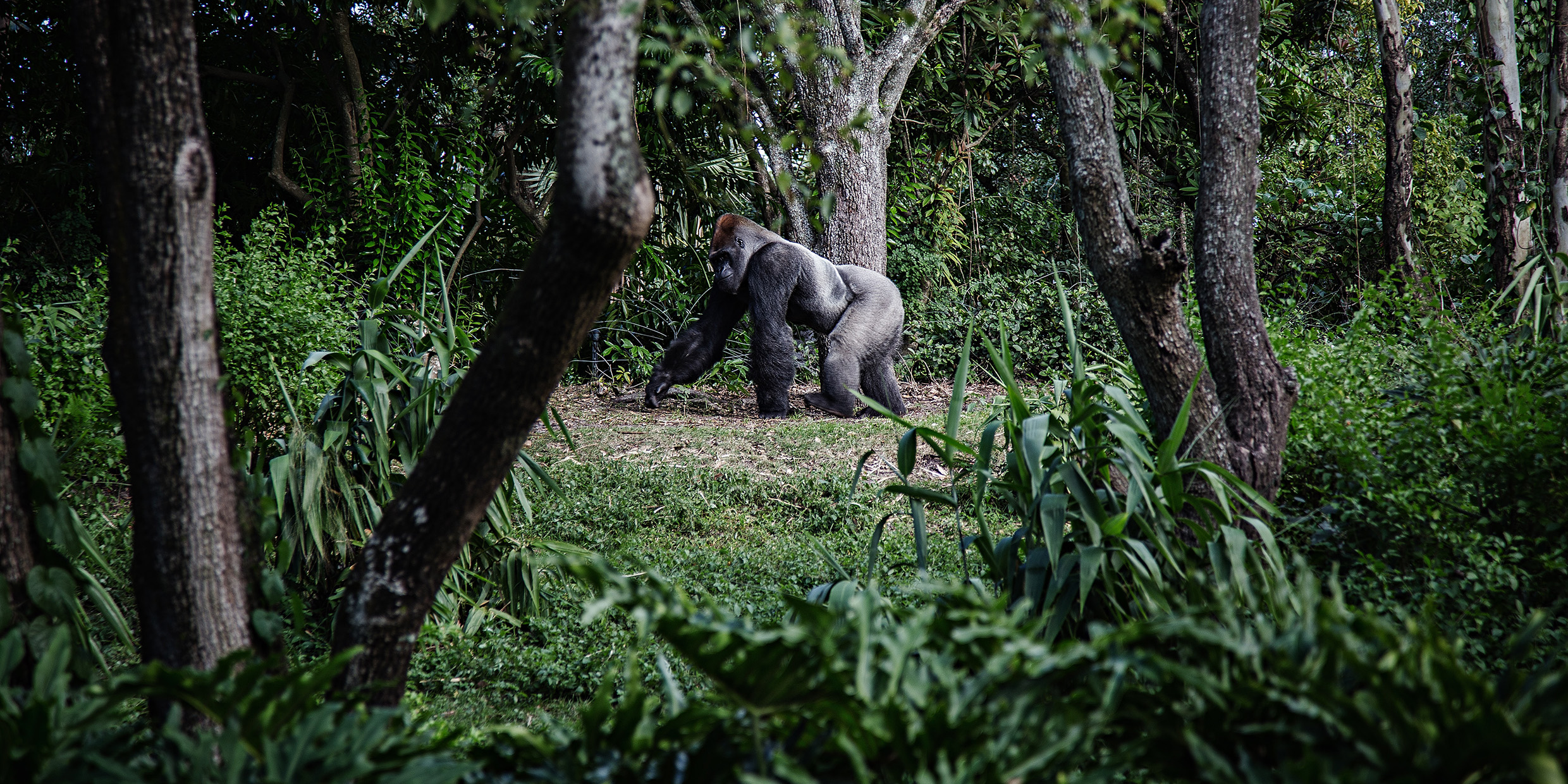Originally published 20 July 1992
“Man’s curiosity and desire to control the world impel him to study living things,” wrote Robert Yerkes in the prologue to his book on chimpanzees, published just after his retirement as director of the Yale Laboratories of Primate Biology in 1942.
Curiosity and control. These were motives for primate research during the time I was growing up. In college we read the works of Yerkes, Kohler, and other researchers for whom chimps and the other great apes were laboratory tools for understanding the human species. There was gentleness and real affection between the apes and those who studied them, but in retrospect we also see paternalism, exploitation, and condescension on the part of the scientists.
Wrote Yerkes: “It has always been a feature of our plan for the use of the chimpanzee as an experimental animal to shape it intelligently to specification instead of trying to preserve its natural characteristics. We believe it important to convert the animal into as nearly ideal a subject for biological research as is practicable.”
The goal of primate research, as defined by Yerkes, was the perfection of the human species through science and social engineering.
Then, in 1960, the legendary paleoanthropologist Louis Leakey chose a young secretarial school graduate named Jane Goodall to study chimpanzees in their natural habitat in Tanzania. Later he sent Dian Fossey into the mountains of Rwanda to observe gorillas, and Birutė Galdikas to Borneo to live with orangutans. These three remarkable women redefined the nature of primate studies — or perhaps it is more accurate to say, they became powerful symbols for change.
The work of the three women was initially supported by the National Geographic Society, and it was through magazine articles and television specials that we learned of their work. What we saw was powerful stuff indeed: young, attractive women go into the forest to live alone with apes; the women are patient, receptive, respectful; they are rewarded with acceptance into the apes’ world, on the apes’ terms; their studies transform our understanding of the apes and of ourselves.
Somewhere in the background of these compelling stories was Louis Leakey, then in his 60s but drawn in complex ways to these young women. Also in the background were male partners, photographers, who packaged the work of the women for public consumption. The women were hardly alone; they were accompanied and assisted by many able native people, and once established in the field, by graduate students and volunteer assistants from all over the world.
It is a great pity that the complex personal lives of these women were obscured by the myth-making of National Geographic and — in the case of Dian Fossey — Hollywood. Yet the myths served useful purposes: they mobilized public support for conservation of the apes’ habitats; they promoted legislation for humane treatment of animals in captivity; and they helped break down barriers to women in primatology.
The list of women who have made important contributions to primate studies in recent decades is long; in fact, to the outsider it sometimes seems that the field now belongs exclusively to women. And more is going on here than science. The work of the female primatologists has implications for racial and sexual politics.
This is the thesis of Donna Haraway’s Primate Visions: Gender, Race, and Politics in the World of Modern Science, an unconventional, sometimes exasperating, always brilliant work of feminist theory and science history. Haraway traces the evolution of primate studies from the 1920s to the present, with nods along the way to such cultural icons as King Kong (love-besotted, species-confused black beast) and Tarzan, Jane, Boy, and Cheetah (the perfect primal primate family). She shows us how ideas of race and gender have shaped primate studies, and how in turn science has sometimes been used to legitimatize white patriarchal myths of the Yerkes sort.
Among the topics discussed by Haraway are the National Geographic articles and TV specials about Leakey’s “ape ladies” — Goodall, Fossey, and Galdikis. The stories emphasized touch, communication, and female spontaneity, in place of aggression, territoriality, and male dominance, as the basis for understanding primates. Haraway helps us sort through the strange mix of myth and science served up by National Geographic and their corporate sponsors.
I was thinking of Haraway’s analysis last week as I watched the films King Kong (the 1976 remake) and Gorillas in the Mist. Although one film is preposterous fiction and the other purports to be a biography of Dian Fossey, the central image of both films involves a beautiful white woman and a gorilla’s hand. In King Kong, Jessica Lange cowers in a giant ape’s palm and is touched affectionately by a king-sized finger. In Gorillas in the Mist, Sigourney Weaver sprawls languorously in the grass as a gorilla named Digit curls his hand into hers. Both women are safe with the apes; it is from the clutches of white male fantasy that they must be rescued.
It is just such a rescue mission that writer/naturalist Sy Montgomery has performed, splendidly, with her wonderful book, Walking With the Great Apes. She tells the stories of Goodall, Fossey, and Galdikas in a way that is unsentimental and refreshing free of myths. She lets us see these women as complex human beings — brave, imperfect, passionately dedicated to their subjects — searching like the rest of us for love and meaning, and finding them on both sides of the lines that divide the species.



